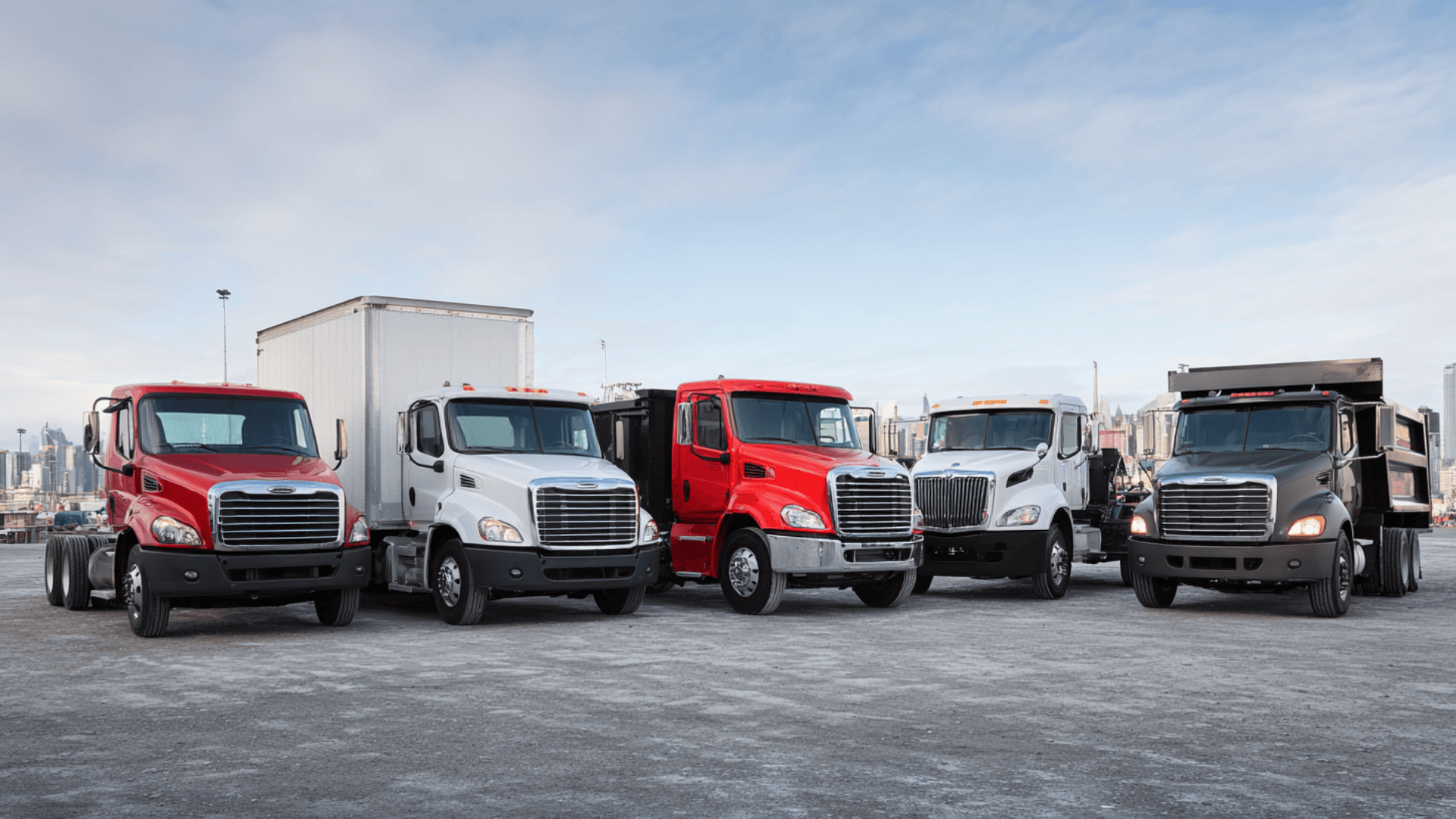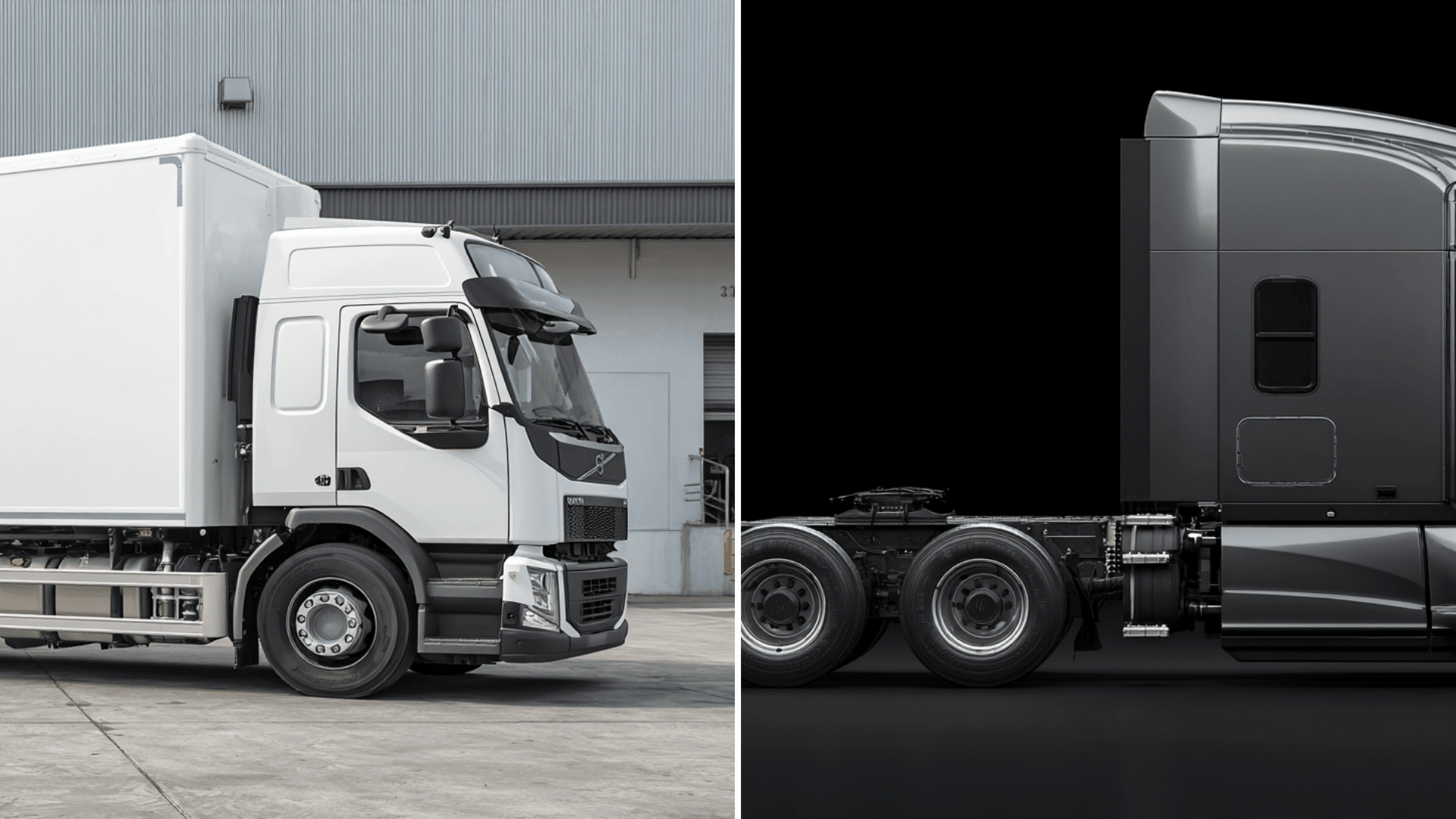If you’ve ever seen a delivery truck that looks like one solid piece, cab and cargo box connected, you were probably looking at a straight truck.
It’s one of the most useful vehicles for moving goods locally, yet many people don’t know what makes it different from other trucks. Understanding how this truck works can save you time and money.
In this blog, I’ll walk you through what a straight truck is, how it’s built, the different types available, and when it makes sense to use one.
Let’s start with the basics…
What is a Straight Truck?
A straight truck is a type of vehicle where the cab and the cargo box are built on one single frame. That means the truck body doesn’t come apart; the driver’s cabin and the cargo area move together as one solid unit.
Unlike a semi-truck, which has a detachable trailer, a straight truck’s trailer can’t be removed. Everything sits on the same chassis, which makes it smaller, easier to handle, and perfect for local or regional deliveries.
You might also hear people call it a box truck, cube van, or cube truck. All of these refer to the same type of vehicle: one frame, one structure, and a single-purpose design.
How They Work
A straight truck keeps things simple; everything sits on one solid frame.
The cab, where the driver sits, and the cargo box, where goods are stored, are permanently connected. There’s no separation or trailer hitch in between. That’s what gives the truck its “straight” name.
The frame is built to handle both the engine and the load, so it’s tough and stable. This setup makes the truck easier to control, especially in tight spots or city streets.
The cargo box can be made of metal, fiberglass, or reinforced wood panels. Inside, you’ll often find E-tracks or tie-down points that help secure freight. Some trucks even include liftgates or side doors for easier loading.
Straight trucks have two or three axles, depending on their size. Most fall under 33,000 pounds GVWR (Gross Vehicle Weight Rating), which means they can handle medium loads without needing a commercial driver’s license in many cases.
Here’s the big difference between setups:
- Straight trucks: one fixed frame, non-detachable cargo box.
- Semi-trucks: separate tractor and trailer, connected by a fifth wheel hitch.
That single-frame design is what makes straight trucks easier to drive, park, and maintain, especially for short-distance or local work.
Common Types of Straight Trucks

Straight trucks come in a few different styles, depending on what you’re hauling.
1. Box Truck (or Cube Van)
This is the most common type. It has a fully enclosed cargo area shaped like a big box. You’ll often see these used by moving companies or delivery services like FedEx. They’re great for keeping goods protected from the weather.
2. Refrigerated Truck (Reefer Truck)
A reefer truck includes a built-in cooling system to keep items cold during transport. It’s ideal for groceries, medicine, or anything that needs temperature control.
3. Stake Bed Truck
This one has an open flatbed with removable side panels, or “stakes.” It’s handy for hauling construction supplies or equipment that doesn’t need to stay dry.
4. Dump Truck
A dump truck has a hydraulic bed that tilts to unload materials like gravel, sand, or dirt. It’s often used in landscaping or construction.
5. Flatbed Truck
Flatbeds don’t have sides or a roof; just a sturdy, open platform. They’re perfect for large, heavy, or oddly shaped loads that can be strapped down.
Each of these trucks shares the same one-piece design, but their purpose and build can vary a lot. Choosing the right type really depends on what you need to move and where you’re driving.
Straight Truck Sizes and Capacity
Straight trucks come in different sizes, and the right one depends on what you’re hauling. Most range from 10 to 26 feet long, but a few heavy-duty ones can go bigger.
Choosing the right size makes a huge difference in handling, fuel use, and how much you can carry.
Typical Size Ranges
- 10–14 feet: Good for small deliveries or moving apartments.
- 16–20 feet: Works well for medium-sized loads or local business deliveries.
- 22–26 feet: Best for larger loads, regional transport, or commercial use.
Weight and GVWR
The Gross Vehicle Weight Rating (GVWR) tells you how much weight the truck can safely handle, including its own weight and the cargo.
- Light-duty trucks: under 14,000 lbs GVWR
- Medium-duty trucks: 14,001–26,000 lbs GVWR
- Heavy-duty trucks: 26,001–33,000 lbs GVWR
Most straight trucks fall under 33,000 lbs, which keeps them in the medium-duty range. That’s one reason they’re so popular; they can move plenty of freight without being as complex as a semi-truck.
CDL Requirements
In many states, if your straight truck’s GVWR is under 26,000 lbs, you usually don’t need a CDL (Commercial Driver’s License). But once you go over that limit, a CDL becomes necessary. It’s always smart to double-check your local rules before getting behind the wheel.
The size and capacity you choose come down to how far you’re driving and what you’re carrying.
If you’re running short routes or light freight, a smaller truck will save time and fuel. But for big hauls or business deliveries, a 26-foot truck might be the better fit.
What Are These Trucks Used For?
Straight trucks are built for everyday hauling jobs that don’t need a big semi-truck. I’ve seen them used by movers, delivery companies, and local businesses that need to move goods quickly and safely without covering huge distances.
They’re perfect for local and regional freight; things like furniture, groceries, or building materials. Since the cab and box are one piece, they’re easier to handle in city traffic and tight delivery spots.
You’ll often see straight trucks in:
- Moving and delivery services: great for furniture, appliances, and home moves.
- Retail and logistics: used by stores and warehouses for regional product deliveries.
- Construction and landscaping: ideal for hauling tools, lumber, or materials to job sites.
The main reason people choose straight trucks is their convenience. They’re:
- Easier to maneuver than semi-trucks.
- More fuel-efficient for short routes.
- Cheaper to buy, maintain, and insure.
For most small to mid-sized operations, a straight truck is the sweet spot, strong enough for serious work, but simple enough to drive without the extra cost or hassle of a big rig.
Straight Truck vs. Semi-Truck

If you’ve ever compared a straight truck to a semi-truck, the biggest difference is how they’re built. I’ve used both, and while they share the same purpose, they work in very different ways.
A straight truck keeps the cab and cargo box on one frame. A semi-truck connects a tractor to a detachable trailer, which gives it more flexibility but also more complexity.
Here’s how they differ:
| Feature | Straight Truck | Semi-Truck |
|---|---|---|
| Structure | Cab and cargo box on one solid frame | Tractor and trailer are separate units |
| Size | Smaller, typically 10–26 feet | Much larger, often 53 feet or more |
| Cargo Capacity | Up to ~33,000 lbs GVWR | 80,000 lbs GVWR (with trailer) |
| Licensing | CDL usually not required under 26,000 lbs | CDL always required |
| Ease of Driving | Easier to handle, great for city driving | Harder to maneuver, requires more skill |
| Best For | Local or regional deliveries | Long-distance hauling |
| Fuel Efficiency | Better for short trips | More efficient for highway driving |
| Cost | Lower to buy, maintain, and insure | Higher purchase and upkeep costs |
| Flexibility | Fixed box — can’t detach | Detachable trailer for multiple uses |
If you’re handling local deliveries or light freight, a straight truck is simpler, cheaper, and easier to manage. But if your work involves cross-country trips or heavy loads, a semi-truck gives you the power and space you’ll need.
Renting, Leasing, and Buying Options
If you’re thinking about getting a straight truck, you’ve got three main routes: renting, leasing, or buying.
Renting
Renting is great when you need a truck for a short time, like a one-time move or a seasonal delivery job.
Companies like Ryder, Penske, and Enterprise Truck Rental make it easy to pick a truck for a day, week, or month. It’s simple and quick.
You don’t have to worry about maintenance or long-term costs, but daily rates can add up if you need the truck often.
Leasing
Leasing works better if you use a straight truck regularly but aren’t ready to buy. I’ve seen a lot of small businesses go this route because it keeps costs predictable.
You usually make fixed monthly payments, and most leases include maintenance or repair coverage.
It’s a good middle ground; you get consistent access without full ownership. Just keep an eye on mileage limits and lease terms so there are no surprises later.
Buying
Buying gives you full control. If hauling or deliveries are a big part of your work, owning your own truck can pay off over time. It costs more upfront, but you’re not tied to rental schedules or lease restrictions.
When buying, I always look at mileage, maintenance history, frame condition, and signs of wear. A strong chassis and reliable engine matter more than cosmetic details.
Straight Truck Maintenance & Inspections
Keeping a straight truck in good shape isn’t just about safety; it’s what keeps your business running smoothly.
1. Routine Checks
Before each trip, it’s smart to walk around the truck and check for problems. Look at the tires, lights, mirrors, brakes, and fluid levels.
Make sure there are no leaks, and confirm the liftgate or ramp works properly. These quick checks take a few minutes but can prevent roadside breakdowns.
2. Scheduled Maintenance
Straight trucks need regular service based on mileage or time. Oil changes, brake inspections, and tire rotations should follow the manufacturer’s schedule.
I usually keep a simple logbook to track service dates; it helps avoid missed appointments and keeps resale value higher.
3. Cargo and Safety Equipment
Don’t forget to inspect the cargo area, especially if you use E-tracks, straps, or tie-downs. Any worn or loose equipment can shift loads and cause damage.
If your truck has a refrigeration unit, make sure it’s cooling properly before loading temperature-sensitive goods.
4. Compliance and Documentation
Even for non-CDL trucks, many states require inspection records or safety checks. Staying compliant helps avoid fines and keeps insurance costs lower.
A well-maintained straight truck not only drives better but also lasts longer. Taking the time for small, consistent upkeep can easily add years to its life and keep your operation running without surprises.
Conclusion
A straight truck is one of the most practical choices for local and regional hauling.
What I’ve found over time is that its real value lies in how flexible it can be; strong enough for commercial work, yet simple enough for daily deliveries.
It bridges the gap between light-duty vans and heavy semi-trucks without the high cost or license hurdles.
When you maintain it regularly, choose the right size, and use it wisely, a straight truck can serve you for years while keeping operations smooth and efficient.
It’s a dependable workhorse that fits right in for businesses that need reliability without overcomplication.




